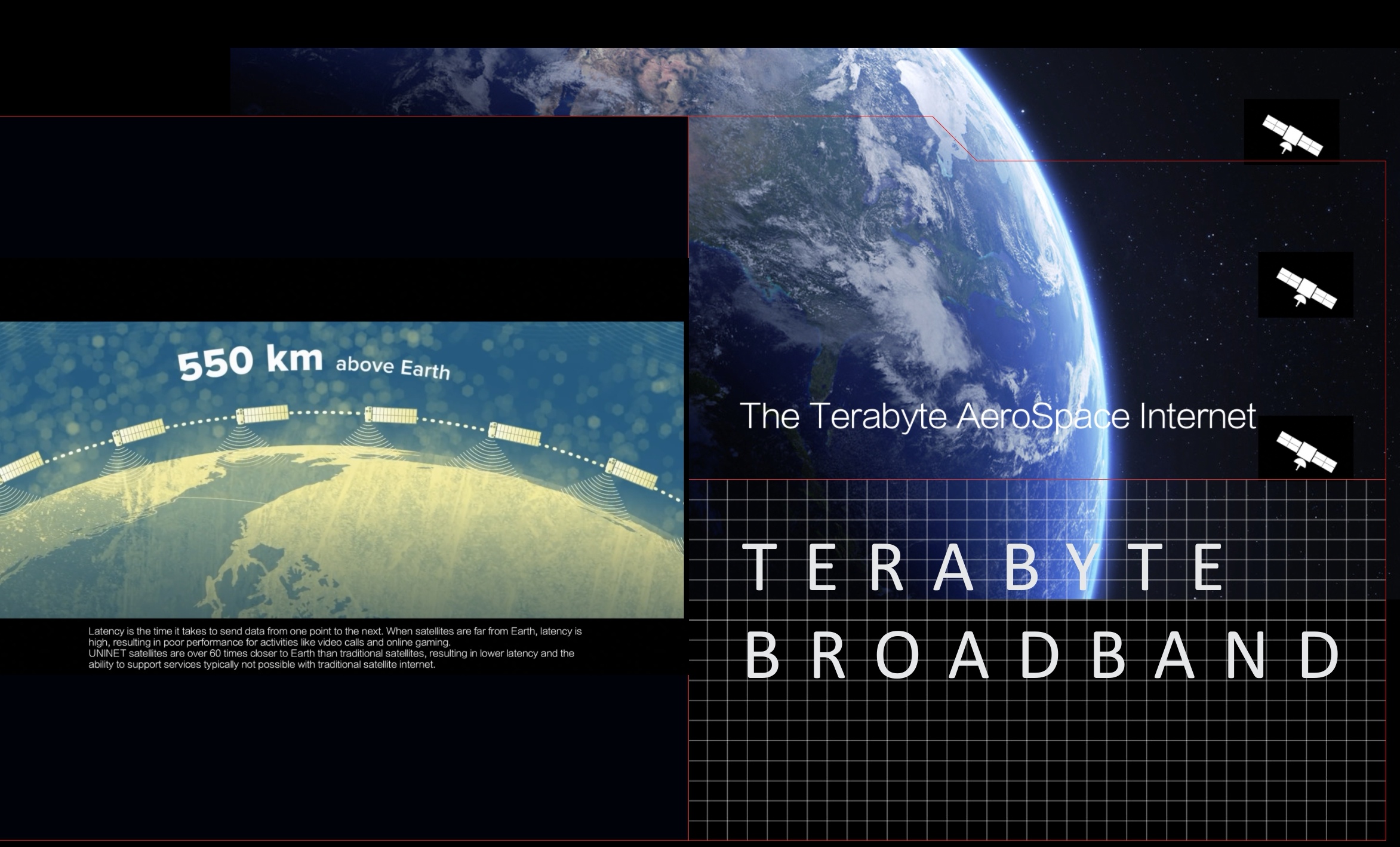Unicorp Space, located in London, is a British space internet 2 and nuclear fusion rocket firm. For the past few months, their latest endeavor has been designing a nuclear fusion rocket engine.
Unicorp Space scientists previously devised Pi’s Law mathematics to create a universe internet that is more powerful than the existing internet. This year, the corporation is constructing nodes infrastructure for the future internet 2, which will deploy in 2023 utilizing cubesat.
Early this year, the firm struck a $200 billion investment pact with Arab investors, but that is never enough, as the corporation plans to spend even more on its aircraft technologies.
From space internet infrastructure to high-speed deep space flight, the organization has evolved.
This month, the corporation announced its ambition to go to Mars at a high pace in less than 30 days, significantly faster than existing rockets.
This will force the firm to invest in space infrastructure in the future.
Unicorp shows us another option: launch thousands of low-Mars orbit satellites and provide clients with hardware receivers for high-speed internet wherever on the earth.
Unicorn Space is currently working on a project to redesign the Internet as a computer that hosts safe software with superpowers. The Lazypi is a revolutionary technological stack that is tamper-proof, unhackable with four levels of security encryption, quick at microsecond peer to peer, expands to billions of users around the world, and enables a new type of autonomous software that promises to reverse Big Tech’s internet monopolization.
From Earth to Space, LazyPi is the new TCP/IP and DTN (Default-Tolerant Networking) alternative.
The LazyPi aims to replace the TCP/IP protocol to significantly improve the way IP traffic is handled, as well as for better security and smarter routing and packet forwarding. This means being able to move large chunks of data without having to identify the address, but simply pointing toward a specific topic, which would speed up information flow.
The LazyPi also attempts to reduce the reliance on humanistic data being managed and held by a few large corporations, instead of giving individuals power over their data and allowing them or the community on the network to determine whether or not specific data should be removed.
The LazyPi aims to provide the highest level of security for people’s data by allowing them to be the only ones who can access data signed by their key. A user can allow other users to access data by accepting the other user’s key as one of the authorized signatures or by making data publicly available signed by their key.
With present technology, connecting Youtube to Mars will cost $1 billion.
Rather than relying on a third party (such as data storage) as in the current internet model, where a Domain Namespace (DNS) resolver resolves a domain and routes the request to the IP of the server holding the data, we intend to change this by switching to Name-based Access Control. This model enforces access control directly over content by encrypting content at the time of production, rather than relying on a third party (such as data storage). It shows how Name-based Access Control (NAC) works in Named Data Networking to implement the content-based access control concept (NDN). It will show how to leverage naming conventions to transmit a clear access control policy and efficiently distribute access control keys, allowing for effective access control.
Lazypi is currently leading a campaign to reimagine the Internet as a computer with superpowers that host safe software. The Lazypi is a revolutionary technological stack that is tamper-proof, unhackable with four levels of security encryption, quick at microsecond peer to peer, expands to billions of users around the world, and enables a new type of autonomous software that promises to reverse Big Tech’s internet monopolization.
The LazyPi protocol is a tried and true internet protocol that has been tested for over four years.
World Wide Web
Access to the internet is one of the resources we have learned to take for granted. Internet connectivity is increasingly essential to modern life, whether it’s to search for information, send an email, or view a video. All of these services, however, are headquartered on Earth. The internet was built on a set of assumptions that will no longer hold if we wish to provide the same experience to Martian residents.
The internet consists of several interconnecting networks. Each network has one or more devices, each with its unique IP address.
When you use an internet-based service, such as a website, your local computer employs a variety of protocols to figure out how to interact with the destination, send a request, and receive a response. If the destination is on the same network as your device, a connection via a single network, most likely through a network switch or router, may be required. On the public internet, this generally entails a slew of various switches, routers, and networks belonging to a variety of different companies.
On Earth, the Transmission Control Protocol (TCP), Internet Protocol (IP), and Hypertext Transfer Protocol (HTTP) are used to access websites (HTTP). TCP/IP is responsible for connecting your device and transferring data to and from the destination. When you send a request to a website, TCP/IP is in charge of establishing a connection, routing the data, and ensuring that the data is sent correctly.
The protocol must establish a connection with the destination before sending any data. This handshake, also known as the SYN-ACK-ACK handshake, establishes a connection between two devices. After it has been opened, further data can be sent. TCP ensures that data arrives in the correct sequence and that any lost data is re-transmitted. TCP thinks it will receive a quick response, and congestion algorithms reduce network speed when data is lost.
MARS will have Internet access.
This is a simplistic explanation, but it suffices to grasp the difficulties in setting up the internet on Mars.
How will we connect to the internet on Mars? Will Mars’ pioneers use the same method of digging up the planet’s surface to bury cables? Maybe. Because there are no seas, we can more effectively connect locations with redundant connectivity than we can with all of Earth’s sub-sea connections, which routinely fail and are difficult to repair. Alternatively, they may tie wires to poles like they do in Asian cities on Earth.
Mobile connections are significantly more popular in areas of the world where installing cables is too expensive or problematic. Fixed-line networks provide minimal latency, although satellite connectivity may be preferable in remote areas and places with less established infrastructure.
Unicorp shows us another option: launch thousands of low-Mars orbit satellites and provide clients with hardware receivers for high-speed internet wherever on the earth.
The present Starlink Terms will cover this scenario:
These Terms, as well as any disputes between us arising out of or related to these Terms, including disputes regarding arbitrability (“Disputes”), will be governed by and construed by the laws of the State of California in the United States for Services provided to, on, or in orbit around the planet Earth or the Moon. The parties acknowledge Mars as a free planet and that no Earth-based government has jurisdiction or sovereignty over Martian activities for services performed on Mars or in transit to Mars by Starship or other spacecraft. As a result, during the time of Martian settlement, disputes will be resolved by self-governing rules established in good faith. Until recently.
Rockets from UNICORP
Nearly $6 billion was invested in various space startups last year, many of which aspire to disrupt the market but are hampered by a stubborn and outmoded model: large rockets, large launches, large prices, and few alternatives.
Unicorp has a unique perspective on space. Small satellites are taking launch, delivering new internet technologies to industry heavyweights like Amazon and Apple, as well as a slew of entrepreneurs eager to expand their reach hundreds of kilometers above the Earth’s surface. More flights taking their satellites exactly where they need to go are what these inventors require. This is where we can help.
Unicorp provides you control instead of spending a ticket on board a massive rocket traveling to someone else’s destination and set to launch on someone else’s timetable. If you’d like, you may reserve a tiny rocket to transfer your satellite and space nodes to a low Earth orbit location. On your schedule. For a lower price. And at a lower risk.
How does Unicorp accomplish this? It’s tempting to claim that this isn’t rocket science. It is, though. It’s crucial to comprehend how traditional manufacturing and commercial methods have altered. Unicorp Space is made up of a who’s who of technology and a few space veterans who are putting what they’ve learned elsewhere to good use.
Terabyte Internet will be a key disruptor in the market for free internet access in the future.
Rather than returning man to the moon or aiming for Mars, our current goal is to make low-Earth-orbit rocket launches so common, regular, and automated that they become almost — dare we say it — boring. If we’re transporting satellites to orbit every day, there’s no need for the traditional launch pomp and high cost. We give a launch around which you may build your business. We’ve seen how blockchain and data ledgers have changed the GPU industry, and this is what we’ll bring to the sector, utilizing our pi-block technology to generate gigabyte data and create new internet and connection.
On LEO space, Space Netting or Uninet Node Netting opens the door to blockchain disruption.
The rocket itself distinguishes us. Unicorp set out to develop tiny, medium, and heavy rockets that would be mass-produced and reliable. We don’t need the equivalent of a Ferrari to take a little cargo to orbit, for the time being, therefore we’re not developing one. Rather than relying on pricey 3D printing or labor-intensive composites, we use lightweight metal to build the rocket as cheaply as feasible. And we build it ourselves, mixing parts of rocket and car production with software design principles to produce a unique, cost-effective, and fast-evolving service.
Customers will pay substantially less for a Unicorp launch since it is a premium service without the markup. We’re creating mobility capabilities since the rockets are tiny; Unicorp will be able to put everything for their clients for space nodes into regular shipping containers and launch from any allowed site around the world. This flexibility is a game-changer, allowing satellites to be delivered quickly to previously inaccessible locations.
As you can see, we got a lot done in stealth mode. We want to execute iterative launches out of the public eye by operating invisibly – launches that will allow us to function within our expectations and produce a product ready for public revelation and commercial launch.
We’ll start by designing our very first rocket. That kind of timeline is unheard of.
What’s the secret? Unicorp’s headquarters are the place to go. We intend to collaborate closely with local authorities and planners to create the world’s first fully-integrated rocket development, production, and testing complex. Our team can manage every aspect of the process, from design to testing, thanks to the 20-acre site. This type of comprehensive approach is uncommon in the business. With access to the same data, we can use the concepts of software development — testing, learning, and iterating — and cooperate more quickly.
We’re delighted to go to the next vital stage of our development as a company, and we’re confident in our space vision. However, as we’ve all learned over the years, space keeps you modest.
We’re delighted to go to the next key step in our development as a company, and we’re confident in our space vision. Space, on the other hand, keeps you modest, as we’ve all learned over our lives. Nonetheless, it is the sense of potential, the opportunity to innovate and make a difference on Earth and the other planet, that drives our enthusiasm.
Now, the British corporation is aiming to raise $300 billion (£240 billion) to continue its projects of developing new rocket engines for space travel, to compete with American space companies SpaceX and Blue Origin, which are now dominating the sector.
Space Nuclear Multiverse Fusion Rocket Engine by Unicorp
Unicorp Space is one of the few corporations using multiverse nuclear fusion technology to construct rocket engines capable of flying at hyper-fast FTL (Faster Than Light) speeds.
The Multiverse Fusion Drive (MFD) is a multiverse nuclear fusion-powered spacecraft engine developed by Professor Lord Rahman, Founder of Unicorp Space and Chief Scientist, and named for its ability to generate thrust from multiverse fusion without going through an intermediate electricity-generation step. Unicorp Space has devised a means to create Faster Than Light (FTL) in nuclear fusion with warp drive for spaceship utilizing their own Pi’s law key exchange algorithm types of a spiral.
Pi’s Law mathematical in designing Multiverse Nuclear Fusion & Warp Drive in Spacecraft Engine for Faster Than Light (FTL) Space will be published in the peer-reviewed journal Classical and Quantum Gravity, implying that actual nuclear multiverse warp drives could be “constructed based on the physical principles known to humanity today.”
The corporation used Pi’s law to create a new universe internet for future speed of light terabyte download internet 2 in 2018 and is now planning to produce multiverse nuclear plasma rocket engines that are quicker than any rockets currently in use.
The prospect of Pi’s law sequence being mathematical evidence of The Law of Conversation of Matter and Energy was considered in the engine study design.
The core vortex formed by the Multiverse Nuclear Energy Fusion is The accelerated energy in magnetic of nucleus fusion is cut off by Pi’s law key exchange design. For an energetic structure, the particle accelerates towards the center vortex generated by the quadrilateral particles in the shape of a spiral nucleus design.
Magnetic coils in the FTL Vortex Multiverse Chamber (Vomac FTL Chamber)
A Vomac is a device that confines plasma in the shape of quadrilateral particles in a spiral nucleus designed for energetic structure using a high magnetic field.
The Vomac is one of several magnetic confinement devices in development for producing controlled thermonuclear multiverse fusion power.
It will show that a stable plasma equilibrium necessitates magnetic field spiral lines that wound in a spiral around the torus.
Previously, devices such as the z-pinch and stellarator attempted this, but they failed miserably. The creation of the notion of the key exchange factor (labeled K in mathematical notation) directed vomac development; by designing the reactor such that this critical factor K was always reached 1, vomac development was guided. The vomac, introduced in 1618, effectively eliminated the instability that plagued earlier versions.
The architecture of high-power superconducting magnets in future vomac systems was investigated. They discovered that the magnets on the inside of the curve, where they were closer together in the vortex plane, had substantially greater stress due to the layout of the primary toroidal coils.
They reasoned that if the vortex magnets were structured in a spiral, the tensional forces within them would be balanced. The “Pi’s Law Vortex” was born from this.
The multiverse of atoms Magnetic confinement spiral
The electrons in atoms dissociate when heated to fusion temperatures, resulting in a fluid of nuclei and electrons known as plasma. Plasma is electrically conducting, unlike electrically neutral atoms, and may thus be controlled by electrical or magnetic forces. Professor Lord Rahman was concerned about the electrodes, thus he chose spiral magnetic confinement over electrostatic and old magnetic confinement.
The particles in a magnetic field will spiral circles around the lines of force and satisfy the vortex ratio of 1.1618. Because the particles are traveling so quickly, their pathways resemble a spiral. The particles circling nearby lines may collide, fuse, and attain the Pi’s law K constant if a magnetic field is set up in such a way that the lines of force are parallel multiverse, and close together.
A solenoid, a cylinder with magnets wrapped around the exterior, may produce such a field. The magnets’ combined fields form a series of parallel magnetic lines that span the length of the cylinder. This design keeps the particles from sliding sideways into the cylinder’s wall.
However, this does not stop them from sprinting to the finish line. The apparent answer is to bend the cylinder into a torus, or donut shape so that the lines create a series of continuous rings. The particles in this configuration circle indefinitely.
The current in the ring would generate a magnetic field that would mix with the magnetic fields generated by the magnets on the outside. The resultant field would be spiraled, causing any given particle to continually find itself on the outside, then inside, of the torus.
The opposing trends would cancel each other out. Professor Rahman has proposed utilizing an external magnet instead of a separate metal ring to produce a current in the plasma itself, which would have the same effect.
This was not the first time a similar arrangement had been explored, but for different reasons. The key exchange K factor changes along the machine’s axis; it is always smaller towards the inside edge of the plasma closer to the machine’s center for purely geometrical reasons, as the long axis is shorter there. That means a machine with a K = phi (1.618) average may nonetheless be less than 1 in some locations.
In 2022, one of the first machines with a spiral-shaped plasma will begin design work. Because the force is greater on the inner edge of the torus, there is a huge net force pressing inward on the entire reactor; this decision was taken for both theoretical and practical reasons. The spiral design offered the added benefit of lowering the net force and making the supported inside edge flatter, making it simpler to support. The addition of an active feedback system to keep a non-circular form in the center came when code investigating the overall architecture observed that it would steadily drift upwards. The team will develop the machine into a spiral-shaped cross-section once this plan has been chosen.
With the aim of breakeven (fusion energy gain factor of 1.618) insight, a new series of devices based on deuterium and tritium fusion fuel were developed. The purpose of these devices was to break even on the K constant of nuclear fusion.
Faster Than Light WARP multiverse spacetime design (FTL)
From microscopic diatoms to liquid gas spirals, the Pi’s rule mathematical sequences architectural design will create zero gravity energy to meet WARP bubbles in a zero-gravity plane.
The sequence of Pi’s law exists in nature in-universe stuff.
The Law of the Conversation of Matter & Energy shows that every continuous symmetry of physical theory has an associated quantity. A conserved quantity is related to every continuous symmetry of a physical theory. Backbone gravity as a field released in all directions is the zero gravity energy ( electrical property atom). Quantum vacuum energy is the same as gravitational energy, which is used to power the WARP. The ability of light as gravitational energy to accelerate and decelerate quantum vacuum and modify energy leads to the paradox of dark matter and dark energy ( dark energy conservation law).
To create a high specific power, variable thrust and specific impulse, and a low-radiation spaceship propulsion system, MFD designed a revolutionary magnetic confinement and heating system fueled with a combination of helium-3 (He-3) and deuterium (D). When atomic nuclei of one species fuse in a heated (100 keV or 1,120,000,000 K) plasma, a collection of electrically charged particles that include electrons and ions, large quantities of energy are released. The core vortex generated by Pi’s law key exchange cut off the magnetic nucleus fusion from the accelerating electrically charged particle energy. For an energetic structure, the particle accelerates towards the center vortex generated by the quadrilateral particles in the shape of a spiral nucleus design.
The plasma in the MFD system is contained in a torus-like magnetic field inside a linear solenoidal coil and heated to fusion temperatures by a revolving magnetic field. The plasma’s Bremsstrahlung and synchrotron radiation are caught and converted to power for communications, spacecraft station-keeping, and plasma temperature maintenance. To heat the plasma, this device employs a particularly designed radio frequency (RF) “antenna.” To start or restart the MFD, the design contains a rechargeable battery or a deuterium-oxygen auxiliary power unit.
The collected radiated energy warms a He-Xe fluid flowing outside the plasma in a boron-containing structure to 1,500 K (1,230 °C; 2,240 °F). This energy is converted to electricity using a closed-loop Brayton cycle generator for energizing the coils, powering the RF heater, charging the battery, communications, and station-keeping duties.
creation of spiral thrust
When the propellant is added to the edge plasma flow and channeled and accelerated through a magnetic nozzle, it produces a variable thrust and specific impulse; this flow of momentum past the nozzle is primarily carried by the ions as they expand through the magnetic nozzle and beyond, and thus functions as an ion thruster.
Unicorp Space is raising $300 billion to keep developing world-class technology.
According to Unicorn Space Founder, British space enterprises should aspire for worldwide success by meeting technological milestones on time and budget while simultaneously being ecologically conscientious. Their goal is to produce world-class technology to act as a force for good.
The business informed the news site in an interview that it would need funds to be as capable as SpaceX and Blue Origin.
For the project, the corporation has inked a $200 billion investment deal with Arab investors, including Kuwait private equity and oil companies, as well as the Middle East royal family.
He went on to say that they want to raise $300 billion (£240 billion) to $500 billion (£400 billion) in the next several years to advance the business’s plans for big tests and commercialization and that they don’t see any need to pass it all over to an American corporation to do so.
According to the company’s ongoing project Multiverse Internet 2, which they are creating, the new internet will create $150 billion in income in the first year.
The corporation believes that within 3 to 5 years, it will have a market capitalization of $500 trillion. The creator stated that he is confident in his ability to accomplish so.
“We want to establish ourselves as more than simply a little British firm; we want to demonstrate our technology to the rest of the globe.”
The business hopes to fly one of its rockets into orbit very soon, similar to what Elon Musk’s SpaceX and Jeff Bezos’ Blue Origin have done.












